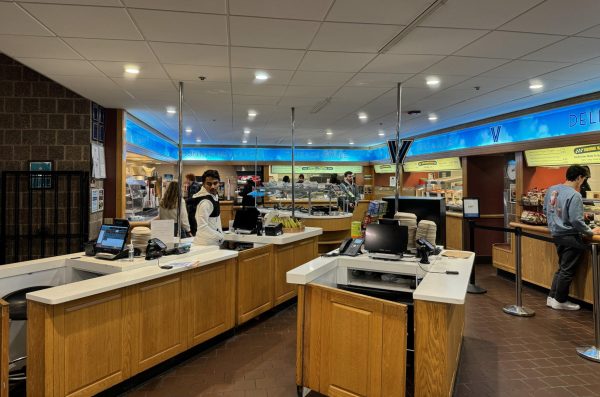Love and Fear in the Villanova Classroom
April 9, 2019
By now, most students on campus will have read Colleen Sheehan’s and my editorial, “A Mole Hunt for Diversity ‘Bias’” (Wall Street Journal March 29, 2019), the extensive ripostes to it that our University President and Provost sent out, soon thereafter, as well as the several statements by individual and groups of faculty that in some sense respond to our argument.
We proposed that the college classroom is a symposium, where professor and students convene in order to pursue, deepen their understanding of, and freely contemplate, the truth. We view the three new “diversity and inclusion” questions on the CATS forms as likely to inhibit that aim.
The questions, we are told, will help us detect signs of “bias” in the classroom, whereas in fact their language in itself suggests a very particular sort of bias; this we observed. But our chief argument was more narrowly focused. Questions of this sort, so tangential to the terms by which pedagogy is typically understood, would lead professors to believe they are being in some way monitored and encouraged to remain silent rather than risk discussing matters of controversy. All professors, no matter their philosophical or political viewpoint, should desire the freedom to present the truth as best they can see it, to challenge their own and students’ viewpoints in open discussion, and even to risk offense in the pursuit of knowledge.
Some students have asked how such questions could have the consequence we propose, and part of the answer lies in the role CATS play at Villanova. All faculty routinely submit their full CATS forms as part of regular reviews that are used for determining salary, retention, tenure and promotion. As part of Villanova’s effort to value teaching, the CATS play an overweening role in those reviews. Some questions are deemed more important than others, but if all of the scored questions are included in review dossiers, then all are potentially available to review committees to be used in their decisions about faculty.
The President’s statement insists that these questions were never to be used for such review purposes. To which I can only reply that that is not the conclusion a reasonable person would draw from the original announcement of the three questions, in September 2018, nor is it the conclusion that would follow from reading the official Academic Policy Committee minutes which discuss the implementation of the questions and the role they will play.
If the President’s words reflect the University’s final policy, then I am pleased to say we are at least in partial agreement. The problem remains, however, that as long as those questions are on the CATS and the results available to department Chairs, they will de facto play a role in formal evaluations. If they are not be used in evaluation, they should not be on the official evaluation forms.
The larger portion of the President and Provost’s statements, and the statements our faculty colleagues have made, in response to our article are more difficult to address. To my eyes, they seem to rush past our narrowly directed argument to take a stand in defense of “diversity and inclusivity” as a program.
Whether “diversity” lies at the heart of liberal education, whether literary studies are impossible without it, whether Villanova has strengthened or wounded its Catholic mission by adding those three questions—these are all great matters that I would be pleased to address. But they are beside the point for which we argued: the new questions on the CATS, because they will inevitably be used for faculty evaluation, will have the effect of silencing faculty speech in the classroom.
Some may think such silencing is a desirable thing. In the wake of President Trump’s 2016 election, many students reported that their professors had made use of the classroom as a soapbox by which to decry that result. At other times, students have confided to me that professors have made bigoted anti-Catholic comments in the classroom, comments that emerge not from scholarly expertise but, as it seemed in one case at least, from the murkier corners of the internet. I have strong doctrinal commitments of my own that it would take a separate column to list and some of which my students may detect in a bemused smile.
Students, wary of offending their classmates or of receiving a bad grade for contradicting a professor, may fear to speak up in class, when they disagree with something. Are not anonymous CATS forms a way to redress such fears?
To my mind, this would be merely to answer one fear, that of the students, with another, new one on the side of the faculty.
We faculty indeed have a responsibility to resist the urge to make the classroom a bully pulpit. It should be, rather and again, a symposium: a place where all of us who love the truth convene in friendship to gaze upon it in wonder. In such a place, professors and students alike must feel at liberty to be candid about their deepest beliefs and commitments, all in the service of our coming to know and love the truth more fully, and of reforming our minds and our lives, in conformity to it. It was in defense of this great good that we wrote.











